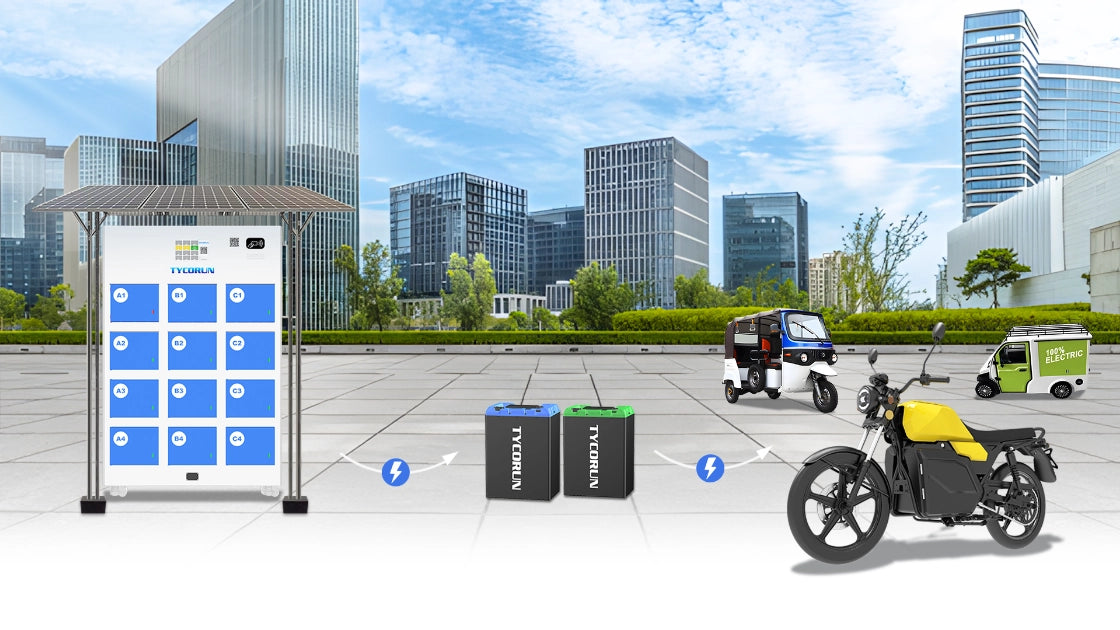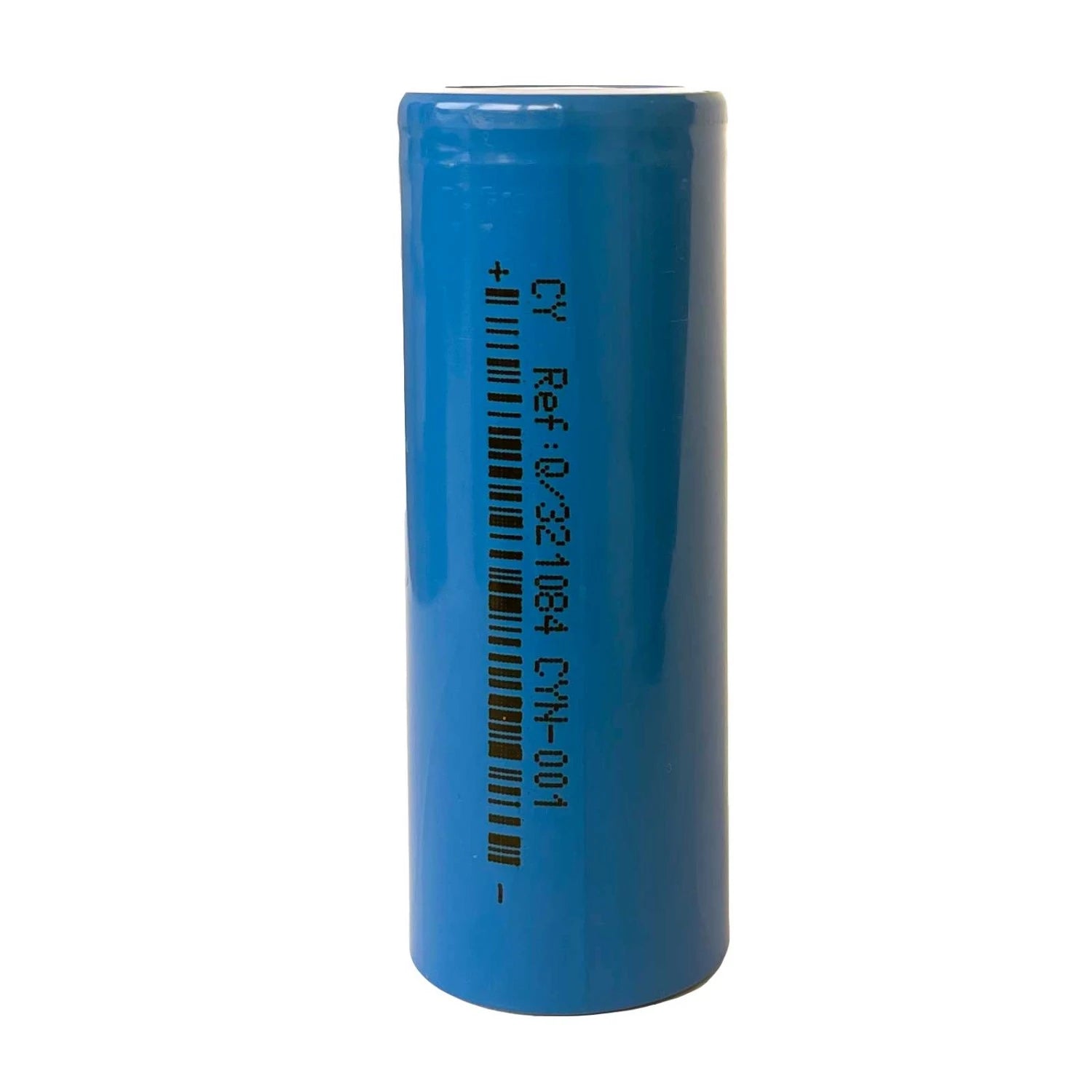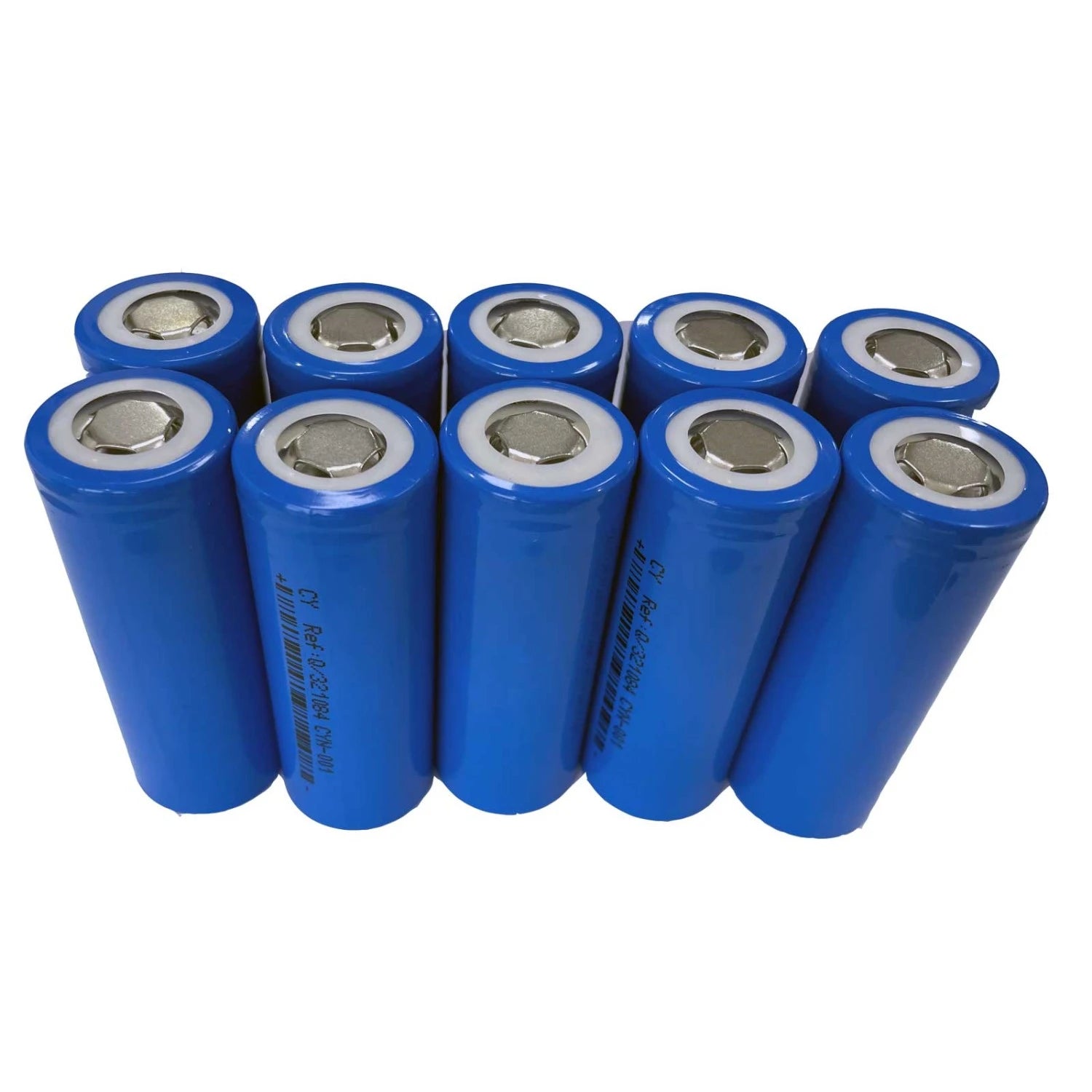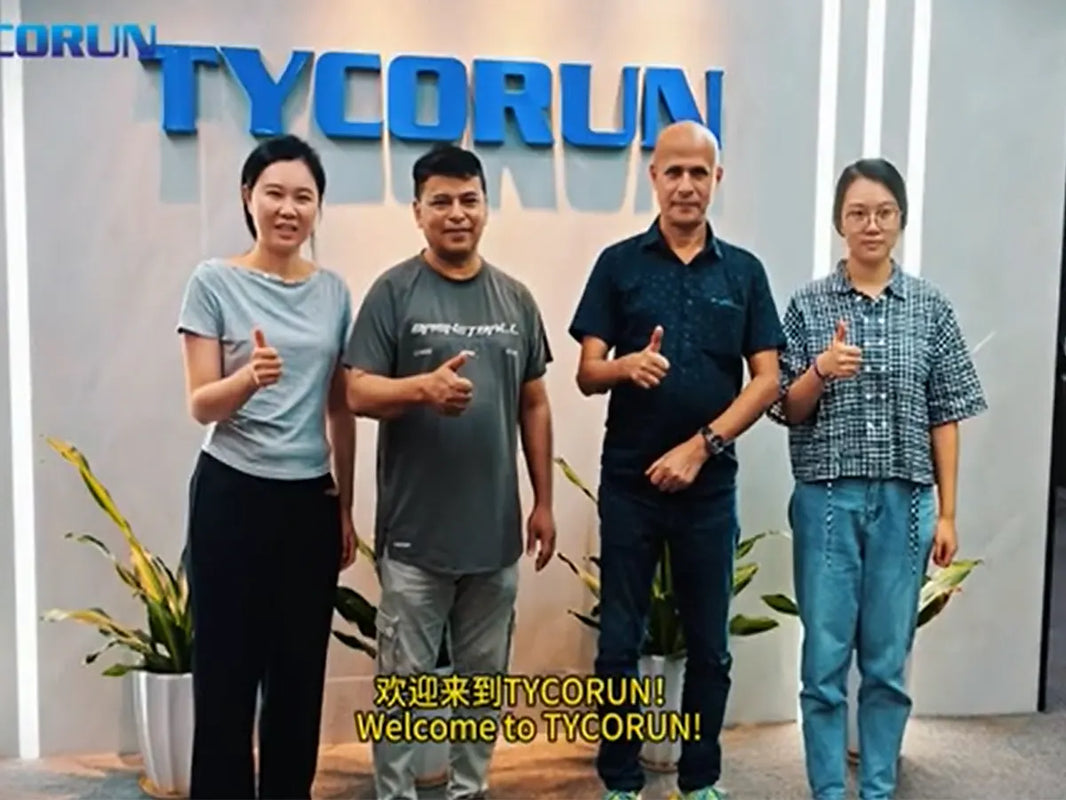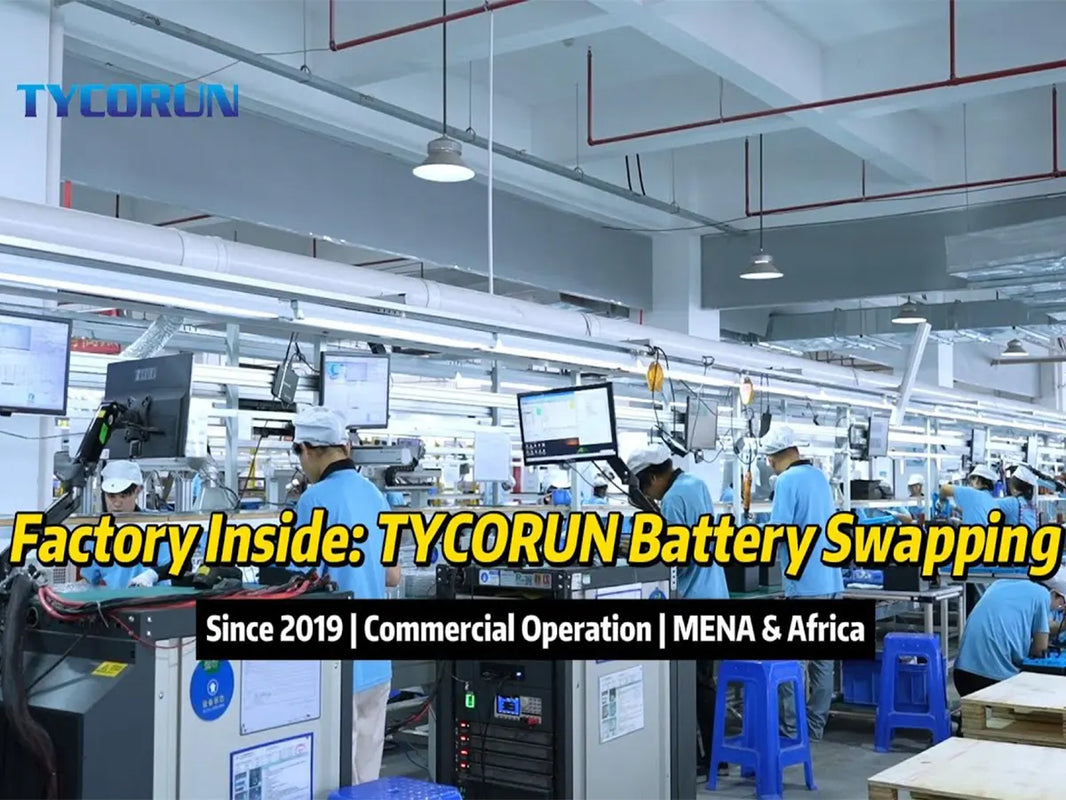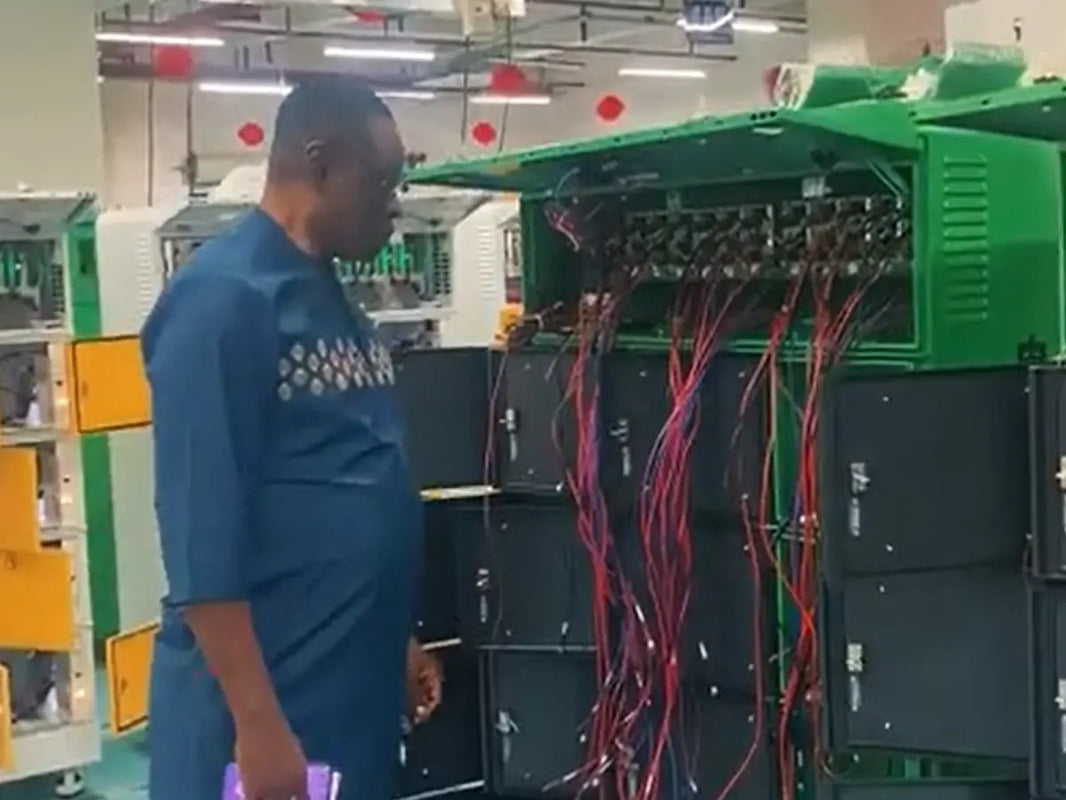
FREE SHIPPING
Free shipping on all US order or order above $100
SUPPORT 24/7
Contact us 24 hours a day, 7 days a week
30 DAYS RETURN
Simply return it within 30 days for an exchange.
100% PAYMENT SECURE
We ensure secure payment with PEV
Battery and Inverter FAQ
Our LiFePo4 batteries are considered to be safe, non-flammable and non-hazardous by international and federally regulated standards.
Our Batteries are commonly used for marine, RV and golf cart applications. You can use our lithium batteries for any application that would normally use a single or multiple lead acid, GEL or AGM batteries.
After you take out your old batteries, place our batteries in the same way. You can use the same cables to reconnect into the Lithium Battery.
Our lithium ion technology uses the latest and most advanced built-in battery protection system to prevent damage to the battery. You may utilize a standard charger for our products, although in some cases a lithium charger may be required to charge the batteries.
The industry standard house battery size used in most RVs, Campers, and #VanLife builds is the 12v 100Ah battery. This is a drop in replacement for AGM and most lead acid batteries. If you are charging off your engine's alternator we recommend a Victron DC-DC smart charger. If charging off solar panels we recommend a Victron Smart Solar charge controller, or if you have a solar charge controller choose the lithium setting. A handy size chart for number of batteries
Best sodium-ion 26700 battery 3300mah for sale
Read more

Battery technology has come a long way in recent years, with new and improved options constantly hitting the market. One such option gaining widespread use in energy storage and electric vehicles is sodium-ion batteries, such as the 26700 sodium cells.
In this article, we will discuss what exactly a 26700 battery is, where you can use it, the different types available, and why a 26700 sodium-ion battery is a smart pick over other battery options. Let’s get to it.
Main content:
- What is a 26700 battery, and what is a 26700 sodium cell?
- Applications of 26700 battery
- Different types of 26700 battery
- Benefits of a 26700 sodium-ion battery
- How long does it take to charge a 26700 sodium-ion battery?
- Maintenance tips on 26700 sodium-ion battery
- How to buy the best 26700 sodium-ion battery
- Characteristics of TYCORUN’s 26700 sodium-ion battery
- FAQs
1. What is a 26700 battery, and what is a 26700 sodium cell?
Let’s start with the basics. A 26700 battery, or a 26700 cell, typically refers to a cylindrical rechargeable battery. You may be wondering what the “26700” means. It simply indicates the battery’s physical dimensions, with the “26” and “70” representing the diameter and length of the battery in millimeters, respectively.
Compared to the more common 18650 battery, 26700 battery is bigger and offers a higher capacity and power output. These batteries come in various chemical compositions, with lithium-ion batteries being the most common. However, the 26700 sodium cells are becoming more popular in resent years.
Now, to what a 26700 sodium cell is, it is basically a 26700 battery that utilizes sodium ions instead of the conventional lithium ions as the charge carriers. Sodium ions are similar to lithium ions in terms of their ability to move between the electrodes of the battery, but they have some advantages over lithium ions, which we will discuss later on.

2. Applications of 26700 battery
26700 batteries are widely used in many devices that we use in our daily lives. They power everything from flashlights to power banks and drones to electric vehicles. Even the device you’re currently reading this article on, whether a laptop or a smartphone, is likely powered by a 26700 battery. These batteries are also used in power tools and to store energy generated by home solar power system and wind turbines.
3. Different types of 26700 battery
Not all 26700 cells are the same. There are different types based on the materials the cathode and anode are made of. The most common types include:
- Lithium iron phosphate, LiFePO4 (LFP battery) - It utilizes lithium iron phosphate as the cathode material and graphite as the anode. Lithium manganese oxide, LiMn2O4 (LMO) – uses lithium manganese oxide for the cathode and graphite for the anode.
- Lithium nickel manganese cobalt oxide, LiNiMnCoO2 (NMC) - This type combines lithium, nickel, cobalt, and oxide for its cathode and uses graphite for its anode.
- Lithium cobalt oxide, LCO (LiCo2) - It uses lithium cobalt oxide for the cathode material and graphite for the anode.
- Sodium ion (SIB) - Instead of lithium ions, SIB relies on sodium ions as the charge carriers.
Although there are so many types of 26700 battery cells, 26700 sodium-ion battery (SIB) has its own unique advantages. The materials used for sodium batteries are more abundant, therefore have more advantages in environmental protection than lithium batteries.
At the same time, since most of the chemical components used in sodium batteries are non-toxic and renewable, the waste generated is also less polluting to the environment.

4. Benefits of a 26700 sodium-ion battery
- Low production cost: Sodium is more abundant than lithium, making sodium cells more affordable to produce and use. Sodium can be easily sourced from seawater, salt lakes, underground brines, and rocks.
- Environmental friendliness: The biggest benefit of a sodium battery is its sustainability. Sodium is readily available in nature and inexpensive compared to the other materials used in traditional lithium-ion batteries. This makes sodium cells a more environmentally friendly option.
- Suitable for energy storage system: The energy density of sodium batteries is about half that of lithium batteries, which means that their volume and weight are usually larger than lithium batteries of the same capacity, so sodium batteries are usually used in situations where weight and volume are not strictly limited, such as energy storage systems and industrial vehicles or other power wheels battery.
5. How long does it take to charge a 26700 sodium-ion battery?
This is one question that comes up often. Generally, the charging of sodium-ion batteries usually takes a few hours, depending on the battery’s capacity, the charger being used, and the charging current.
On average, it takes around 3-4 hours to fully charge a 26700 sodium-ion battery using a standard charger. You can use this formula to calculate the charging time with the capacity of the battery and the charging current of the charger:
Charging time (hours) = battery capacity (mAh) ÷ charging current (mA) × 1.2 (coefficient)

6. Maintenance tips on 26700 sodium-ion battery
Understanding how to properly maintain your sodium cell to maximize its lifespan and performance is crucial. We have gathered some key maintenance tips for you to follow:
- Avoid overcharging or completely draining the battery - this can cause irreversible damage to its capacity and overall performance. It’s advisable to recharge the battery when it is about 20-30% of its capacity.
- Store your 26700 cells at appropriate temperatures. Extreme hot or cold temperatures can affect the performance and lifespan of your sodium cell. The recommended storage temperature is within 20-30° (68-86 F)
- It is advisable to check your batteries for any signs of damage regularly. If a battery is punctured, it may lead to an explosion or fire.
- If you plan on storing your battery for an extended period, charge it at least once every three months to prevent it from fully discharging.

7. How to buy the best 26700 sodium-ion battery
Here are some steps to follow to ensure you purchase the best 26700 sodium cell on the market:- Do your research: Research different brands and models of 26700 sodium batteries. Look for reviews and feedback from previous customers to get an idea of the product quality and compare the specifications, performance, and pricing to make an informed decision.
- Consider your needs: Determine your specific requirements for the battery. Are you looking for a battery with a longer lifespan, higher capacity, or faster charging capabilities? Understanding your needs will help you narrow your options and choose the battery that best fits your requirements.
- Check compatibility: Ensure that the 26700 battery you choose is compatible with your device or application. Check its capacity, current, voltage, and other specifications to ensure a proper fit.
TYCORUN provides a trusted source for high quality 26700 sodium-ion batteries. With over a decade of experience in manufacturing and supplying lithium-ion and sodium-ion batteries, We have been a reputable battery provider with full safety certifications. We have a variety of 26700 batteries, each with different capacities, currents, cycle lives, and safety features. So you have a range of options based on your needs and budget.
8. Characteristics of TYCORUN’s 26700 sodium-ion battery
- TYCORUN’s 26700 battery has many characteristics that make it stand out from other batteries on the market. Some of these characteristics are:
- The 26700 battery uses sodium as its charge carrier, which is cost-effective and environmentally friendly.
- TYCORUN’s sodium cell operates at a nominal voltage of 3.1V.
- It offers a capacity range of 3300 mAh, enabling extended usage time for various devices and applications.
- With an energy density of 127Wh/kg and a long cycle life exceeding 2000 cycles, the battery can be fully discharged up to 2000 times before its capacity drops below 80% of its original value.
- It can be used for various devices such as torchlight, remote-controlled toys, power tools, and other portable electronics.

9. FAQs
Let’s address some common questions about the 26700 cell and the 26700 Sodium-Ion Battery:
① Does 21700 cells provide more power than 18650 cells?
Yes, generally, 21700 cells are larger than 18650 cells of the same chemical, and a larger size typically means a greater energy storage capacity and higher output power.
② Is 26700 better than 21700?
The choice between a 26700 and 21700 battery depends on your specific requirements. 26700 batteries have a higher battery capacity and output power, but it has drawbacks. A 26700 battery is heavier and larger than a 21700 cell, resulting in more weight for the device it will be used in.
Ultimately, choosing between a 26700 cell and a 21700 cell depends on balancing capacity and current versus weight and size for your application.
③ Are sodium-ion batteries better than lithium-ion batteries?
Sodium-ion batteries are better than lithium-ion batteries in some aspects but not in all. Sodium-ion batteries have some advantages over lithium-ion batteries in terms of cost, availability, high and low temperature performance, and environmental impact.
However, sodium-ion batteries also have some disadvantages compared to lithium-ion batteries in terms of energy density, self-discharge rate, and storage stability.
Related posts: 1000 watt pure sine wave inverter, 2000w pure sine wave inverter, best 3000 watt inverter
You may also like
- Choosing a selection results in a full page refresh.

